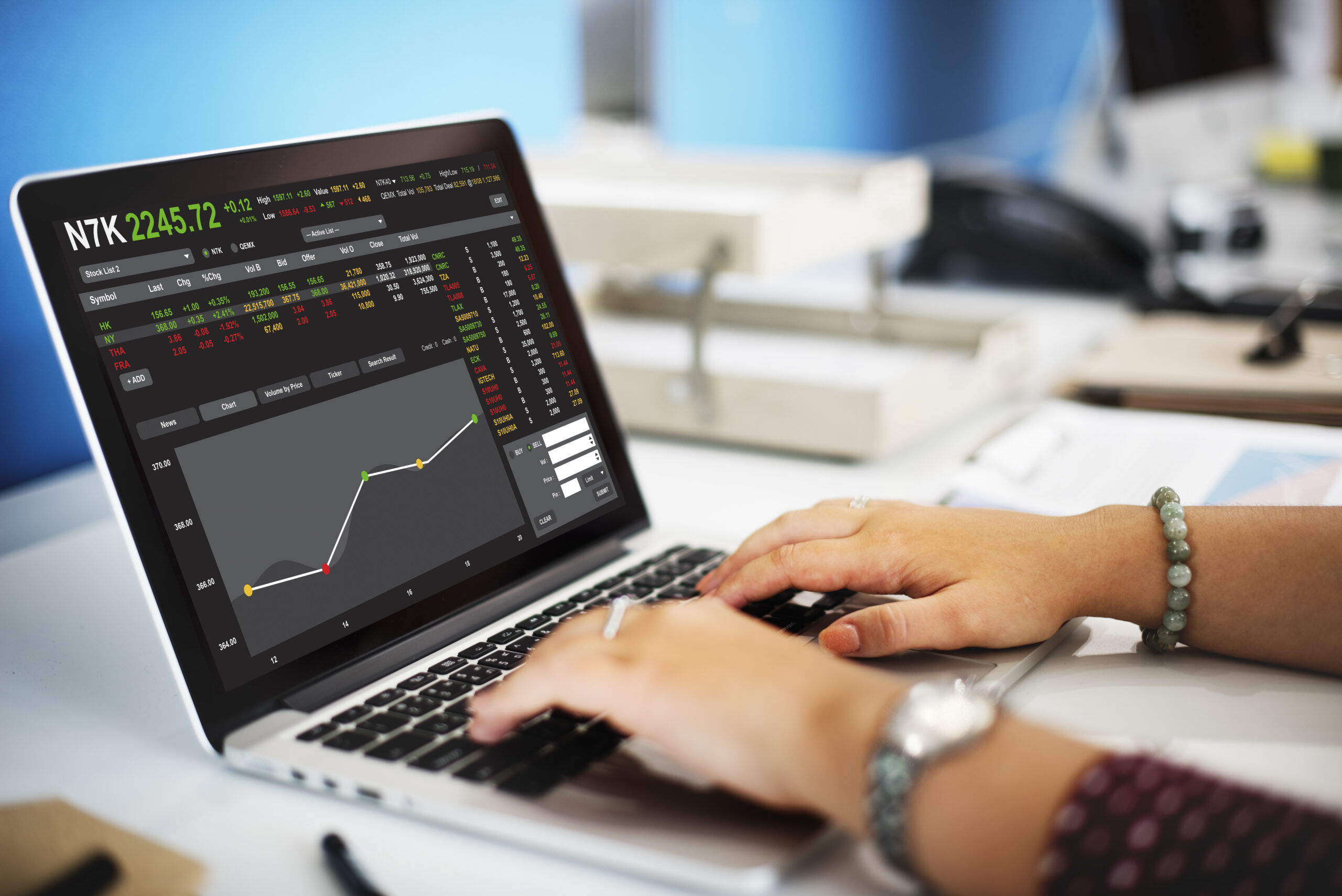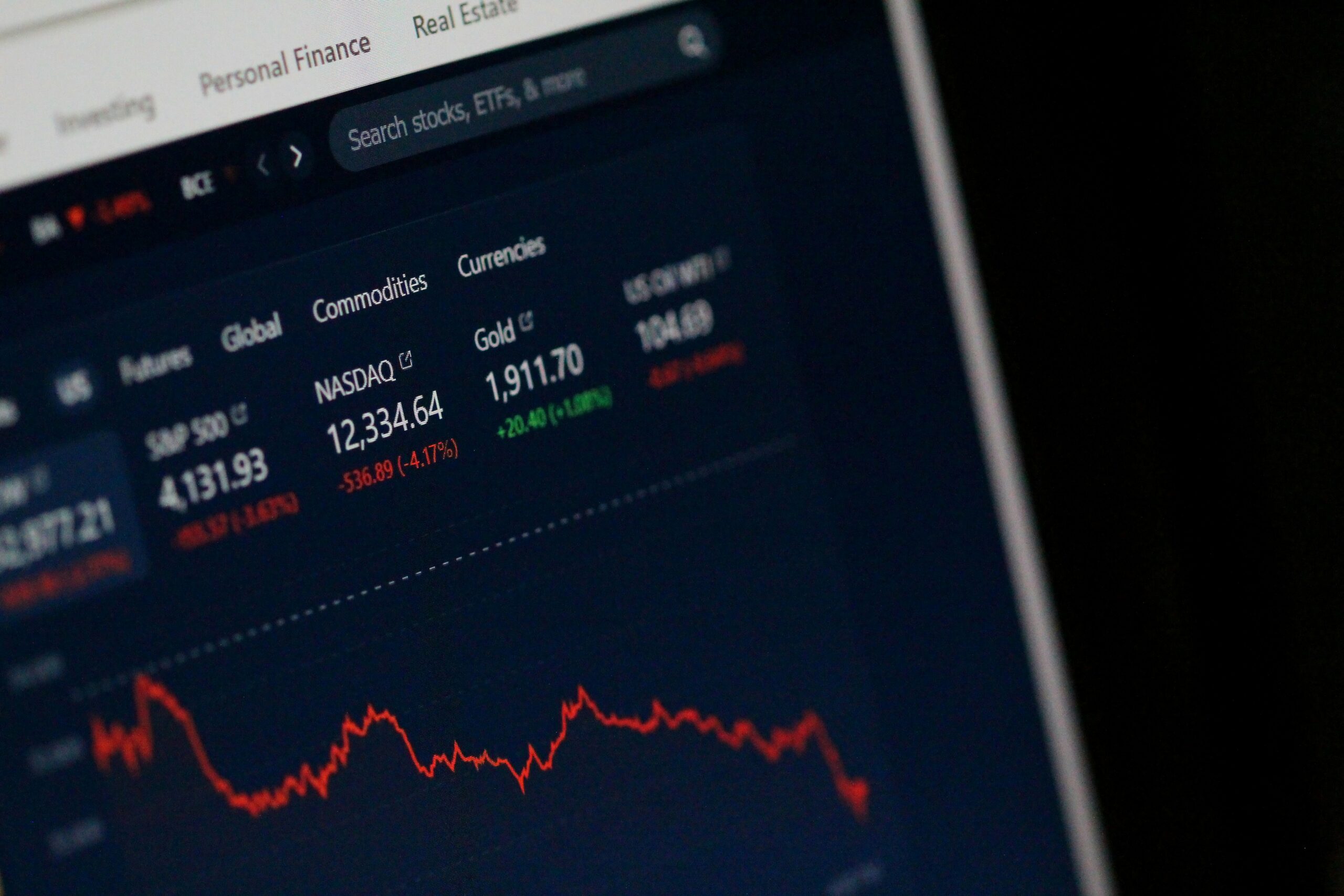Stock Market
Grey Market Premium (GMP)

Introduction
If you’re an investor interested in Initial Public Offerings (IPOs), you might have come across the term Grey Market Premium (GMP). But what exactly does it mean, and why is it important? Simply put, GMP is the extra price at which shares of an IPO are traded in the grey market before the stock is officially listed on an exchange. Understanding Grey Market Premium (GMP) can help you predict how an IPO might perform and make informed investment decisions. GMP on IPO is a topic of growing interest, and this guide will show you how to use it effectively. Let’s explore this intriguing concept in detail.

Table of contents

What is Grey Market Premium?
The grey market is an unofficial platform where shares of upcoming IPOs are traded before their listing day. This is often referred to as the IPO grey market. Unlike formal exchanges, the grey market operates without regulation, making it a risky yet intriguing space for early trades.
- How GMP Works: GMP reflects the demand for an IPO in the grey market. For instance, if an IPO’s issue price is ₹100 and the GMP is ₹20, the expected listing price is around ₹120. Such insights make GMP on IPO a valuable metric for investors.
- Where to Check GMP: Platforms like GMPToday.com and IPOWala GMP offer live updates on the GMP of upcoming IPOs, helping investors track market sentiment. Live grey market premium updates can be your go-to tool for real-time information.
Why Does Grey Market Premium Matter?
GMP acts as a barometer of market sentiment, helping investors gauge the potential performance of an IPO. Here’s why it’s significant:
Predicting IPO Performance:
A higher GMP typically indicates strong demand and a likelihood of listing gains, while a lower GMP might suggest lukewarm interest. The grey market premium for IPO helps set expectations.
- Understanding Market Sentiment: GMP reflects how the market perceives the IPO. Positive GMP suggests optimism, while a negative GMP can hint at potential listing losses. This makes tracking IPO GMP live updates critical.
- Historical Evidence: Many IPOs with robust GMPs have delivered strong returns on listing day. However, there are exceptions where GMP predictions didn’t match the actual outcome, showing why a broader analysis is necessary.

What Factors Influence Grey Market Premium?
Several factors affect the GMP of an IPO. Understanding these can help investors make better decisions:
- Company Fundamentals: The financial health, growth potential, and reputation of the company play a crucial role in driving GMP. Companies with strong fundamentals usually attract higher premiums, elevating the IPO premium in the grey market.
- Overall Market Sentiment: A bullish stock market often boosts GMP for upcoming IPOs, while a bearish market can dampen it. Live IPO GMP updates reflect these market trends.
- Demand and Supply: Limited availability of shares in the grey market combined with high demand naturally increases the GMP. This is why tracking the GMP of current IPOs is essential.
- Media and Analyst Coverage: Positive reviews and media hype can elevate the GMP by creating excitement among retail and institutional investors.
- Peer Performance: If recent IPOs in the same sector have performed well, it can positively impact the GMP of a new IPO. The GMP of upcoming IPOs often mirrors sector-wide trends.
Risks of Relying Solely on GMP
While GMP is a useful tool, it’s not without its risks. Here are some reasons why relying only on GMP can be misleading:
- Unregulated Market: The grey market operates outside formal regulatory frameworks, making it susceptible to manipulation. This is a key consideration for gray market IPO investors.
- Inconsistent Predictions: High GMP doesn’t always guarantee a strong listing performance. Similarly, low GMP doesn’t always mean poor returns. Keeping an eye on IPO GMP today live updates can help you navigate these inconsistencies.
- Possibility of Hype: Some players might artificially inflate GMP to create a false sense of demand.
- Examples of Discrepancies: There have been instances where IPOs with high GMP underperformed on listing day, disappointing investors who trusted GMP blindly.
How to Use GMP Strategically
To make the most of GMP, it’s important to use it wisely and not as a standalone indicator. Here’s how:
- Combine with Fundamental Analysis: Evaluate the company’s financials, industry position, and growth potential along with GMP insights. This gives you a more holistic view of the IPO grey market premium.
- Track Real-Time Updates: Websites like GMPToday.com provide live GMP data, helping investors stay informed about market trends. Monitoring live grey market premium updates ensures you’re always in the loop.
- Monitor Institutional Interest: A strong interest from institutional investors often validates the GMP trend and indicates a promising IPO.
- Look for Consistent Patterns: Analyze the GMP of current IPOs and compare it with historical data to identify reliable patterns.
For Check IPO Live GMP Update
Case Studies: GMP in Action
To illustrate how GMP works, let’s look at a few examples:
- Successful IPO: A well-known IPO had a GMP of ₹100 over its issue price. It listed with a 25% gain, validating the grey market’s optimism.
- Overhyped IPO: Another IPO had a GMP of ₹50 but ended up listing at par with its issue price. This highlights the importance of not relying solely on GMP.
- Low GMP with Surprise Gains: An IPO with a negligible GMP surprised investors by delivering strong listing gains, driven by unexpected demand on the listing day. Such examples reinforce the need to combine GMP with broader research.

Conclusion
Grey Market Premium (GMP) is an insightful tool for IPO investors, offering a glimpse into market sentiment and potential listing performance. However, it’s crucial to use GMP as part of a broader investment strategy that includes thorough research and analysis. By understanding the factors influencing GMP and the risks involved, you can make informed decisions and navigate the IPO market more effectively.
The next time you check the GMP of new IPOs on GMPToday.com or IPOWala GMP, remember to pair that data with a deeper dive into the company’s fundamentals and market conditions. GMP can be a great guide, but the ultimate success of your investments lies in a balanced and well-informed approach.
FAQs
- What is GMP in simple terms? It’s the extra price investors are willing to pay for IPO shares in the grey market before listing.
- Where can I check GMP? Platforms like GMPToday.com and IPOWala GMP provide live updates on GMP for current and upcoming IPOs.
- Can GMP guarantee listing gains? No, while GMP is a helpful indicator, it doesn’t guarantee performance.
- Why is GMP unregulated? The grey market operates informally and outside the purview of stock market regulators.
Read More About IPOs
Stock Market
Sensex Soars Over 2,975 Points, Nifty Tops 24,900 After India-Pak Ceasefire: 7 Reasons Behind Dalal Street’s Big Rally

On May 12, 2025, the Sensex jumped by 2,975.43 points to close at 82,429.90, marking a 3.74% rise. At the same time, the Nifty climbed 916.70 points to finish at 24,924.70, up 3.82%. This strong rally is the best day for both indexes in four years. The main trigger was the historic India-Pak ceasefire, which eased long-standing geopolitical tensions. This event lifted investor mood and sparked widespread buying on Dalal Street.
Table of Contents

Sensex Rally Signals New Confidence on Dalal Street
The Sensex surge showed not just relief from geopolitical risks but also a combination of factors that lifted market confidence. After a period of uncertainty and conflict, the ceasefire prompted investors to move in with renewed hope. The rally spread across sectors, making this a broad market event rather than one driven by just a few stocks.
7 Reasons the Sensex and Nifty Rose Sharply Today
1. India-Pakistan Ceasefire Cuts Geopolitical Risks
The biggest reason for today’s rise was the ceasefire deal between India and Pakistan. It calmed fears of conflict and made the region safer for business and investment. Geopolitical tensions had caused sharp market moves before. Now, with peace talks bearing fruit, investors found new reasons to buy Indian shares.
2. U.S.-China Trade Agreement Boosts Global Mood
At the same time, news of the U.S. and China easing some trade barriers helped global markets. This reduced concerns about a lasting trade war. When global trade feels less threatened, markets worldwide gain strength. India’s market benefited from this positive shift in global trade relations.
3. Progress in Russia-Ukraine Peace Talks Eases Global Pressure
The latest talks between Russia and Ukraine suggested a possible reduction in fighting. This news eased global market pressures as well. Stable global relations tend to lift emerging markets like India. The combination of peace advances in different parts of the world helped push the Sensex higher.
4. Gains Broadly Shared Across Key Sectors
Unlike some rallies which focus on just a few sectors, this rally included almost all of them. Banking, IT, automobiles, and consumer goods sectors all made good gains. This shows that the market’s strength is broad-based, not limited to only select industries. A wide sector rally makes the rise more sustainable.
5. Investors Show Greater Risk Appetite
After times of uncertainty, investors are more willing to take risks again. This shift was seen in the rise of mid-cap and cyclical stocks that had been weak earlier. Both institutional and retail investors joined the buying spree. Lower risk fears helped push stock prices higher across the board.

6. Stable Domestic Economic Conditions
India’s own economy showed steady signs with stable inflation and steady GDP growth projections. Fiscal deficits remain manageable. These facts reassured investors about the market’s underlying strength. A solid economy makes it easier for companies to grow profits and keep stock prices up.
7. Surge in Investor Wealth and Mood
The overall wealth of investors on Dalal Street jumped by over Rs 16 lakh crore with this rally. This was not just a rise in prices but also a change in investor mood. Confidence is key to keeping markets moving higher. The wealth gain gave investors a positive feeling about future gains.
What the Rally Means for India’s Markets Ahead
The strong moves in Sensex and Nifty show that global and local stability can lift markets. Although stock markets can still be volatile, today’s trading sets a hopeful tone for coming months. More capital inflows and market growth may follow if peace and economic stability hold.
Key Takeaways for Stock Investors:
- Geopolitical peace greatly influences stock market gains, as shown by the India-Pak ceasefire.
- Global events like trade deals and peace talks also shape India’s market outlook.
- A rally including many sectors signals strong market health.
- Economic indicators such as inflation and GDP growth remain important to watch.
- Investor confidence often changes with news on peace and economic policies.
The surge in the Sensex and Nifty after the India-Pak ceasefire highlights how peace and stability matter most to Indian markets. As tensions ease, investors on Dalal Street are pushing prices higher, signaling wider optimism. This event not only lifts current sentiment but may guide stock trends for months ahead.
Stock Market
Defence Stocks in Focus: All You Need to Know About HAL, BEL, Bharat Forge and Others 9 MAY 2025 Exclusive News !

The rise in India-Pakistan tensions has brought defence stocks into the spotlight. Investors are watching companies like Hindustan Aeronautics Ltd (HAL), Bharat Electronics Ltd (BEL), Bharat Dynamics Ltd (BDL), and Bharat Forge closely. These stocks have seen a jump as India plans to boost its defence spending and build more military equipment at home. This article covers why defence stocks are gaining attention, who the key players are, and what lies ahead for this sector as India strengthens its military.

Table of Contents
Why Defence Stocks Are Rising
The main reason defence stocks are gathering momentum is the growing conflict between India and Pakistan. After India’s precision strikes on terror camps in Pakistan and Pakistan-occupied Kashmir, these stocks went up by 2% to 7%. Investors expect India to spend more on upgrading its weapons and building new defence technology. The government is pushing hard to make more defence gear within India, which helps these companies grow. Key reasons behind the rise in defence stocks include:
- Rising geopolitical tensions and the need for better security
- Government focus on modernizing defence forces
- Boost in defence spending predicted for coming years
- Big push for Make in India and local defence production
The Top Defence Stocks in India
Hindustan Aeronautics Ltd (HAL)
HAL is a major player in India’s aerospace and defence sector. It builds aircraft, helicopters, engines, and avionics gear. It also handles aircraft repairs and maintenance. As India looks to upgrade its air forces, HAL is set to win more government contracts. This company will benefit from new planes and flying systems planned by the military.Stock News
Bharat Electronics Ltd (BEL)
BEL works in defence electronics. It makes radar systems, communication tools, and electronic warfare gear. These technologies are vital in today’s wars, which rely more on information and control. BEL holds a strong position supplying India’s military with critical electronic systems and battlefield solutions.
Bharat Dynamics Ltd (BDL)
BDL makes missile systems, including anti-tank and surface-to-air missiles. With recent strike operations and a focus on missile power, BDL’s importance is growing. The company’s role in missile production links directly to India’s plan for stronger self-reliant defence forces.

Bharat Forge
Bharat Forge is famous for its metal forging and has moved into defence manufacturing. It supplies parts for artillery and armored vehicles. Reports say Bharat Forge is in talks to increase defence production in Delhi, supporting the government’s aim to raise local manufacturing capacity. The importance of these companies amid escalating India-Pakistan tensions is reflected in real-time market reactions. For instance, this Moneycontrol article provides specific details on how stocks such as HAL and Bharat Electronics spiked following geopolitical developments.
Other Defence Companies to Watch
- Paras Defence: Makes missile parts and aviation systems.
- Mazagon Dock Shipbuilders: Builds naval ships and submarines.
- Cochin Shipyard: Repairs and builds defence and commercial ships.
- BEML: Makes heavy machinery including military vehicles.
- Data Patterns: Works on avionics and electronics systems.
These companies attract investors who expect rising defence orders and upgrades.
What’s Next for Defence Spending?
The Indian government plans to hike defence capital spending significantly. Experts expect India to spend over $130 billion on defence over five years. This spend could grow by 7-8% each year. The reasons include constant border issues and a desire to build a strong and self-reliant defence industry. Key points for the defence sector’s future:
- More spending on new military gear and upgrades
- Push for making weapons in India to cut imports
- More research and use of new defence tech
- Support for private companies and boosting defence exports
With a strong government push to boost indigenous defence production, companies such as Bharat Forge are discussing capacity expansions. Business Today covers a recent government meeting and industry perspectives, including Baba Kalyani of Bharat Forge, in this article, highlighting current production ramp-ups and strategic goals.

Global Context: European Defence Stocks on the Rise
Understanding the global defence investment landscape can offer valuable insights. European defence stocks have rallied strongly in 2025, driven by heightened geopolitical risks across the continent. For investors exploring defence sectors beyond India, this YouTube video by PensionCraft provides a comprehensive overview of the European defence market, explaining why defence remains a resilient sector and discussing portfolio diversification strategies. European markets witnessing such trends affirm the global nature of defence investments as strategic hedges during uncertain times.
Conclusion: Why Defence Stocks Matter Now
Recent events and government plans have made defence stocks like HAL, BEL, Bharat Forge, and BDL attractive to investors. The rise in these stocks shows confidence in India’s growing defence budget and efforts to modernize its military through local production. India’s focus on building its own defence capacity will keep this sector strong for a long time. With bigger budgets and new technology, these defence stocks can become key parts of investment portfolios focused on India’s security and economic future. Investors should keep a close watch on how these companies grow and how government plans play out. For a broad analysis framing the aerospace and defence sector as a generational opportunity, see this coverage by the Economic Times.
News Feed
Why is Stock Market Down Today? BSE Sensex Crashes Over 1,000 Points; Nifty50 Below 23,950

The stock market is down today, hitting investors with a sharp drop. The BSE Sensex has crashed by more than 1,000 points. At the same time, the Nifty50 has slipped below 23,950. This sudden fall has raised questions among investors, stock buyers, and students trying to understand the market trends. Several global and domestic factors have combined to push the market lower.
Table of Contents

An infographic illustrating the basic concept of the stock market and how it functions.
What Is Causing the Stock Market to Fall Today?
Global Market Trouble
A key reason for the stock market falling today is the trouble in global markets. The United States has imposed new tariffs on many imported goods. These higher tariffs raise worries about a growing trade war. Such fears lead to unstable markets worldwide. Emerging markets, like India, are not safe from this impact. Investors around the world are worried about slower economic growth and political tension. This has caused many to sell stocks and reduce risk. The ongoing trade disputes show that the global economy is still fragile. Investors are cautious and are cutting down on stocks, especially in sectors that depend on trade.
U.S. Tariffs and the Impact on Indian Stocks
The U.S tariffs have a direct effect on India. Indian exports now face a steep tariff of about 26%. For China, the tariff is even higher at 34%. These extra costs reduce the profit potential for Indian exporters. As a result, companies that sell goods abroad face setbacks, leading to negative feelings in the stock market. Higher tariffs hurt India’s trade balance. They also raise concerns about how long the trade conflict might last. This uncertainty hurts investor confidence and adds pressure on the stock market today.

Historical perspective on stock market crashes shows how unpredictable and impactful these events can be. For a visual explanation of the situation specifically in India, you may find this video helpful:
Watch: Why is Stock Market Crashing in India | Explainer
This video explains why the Indian stock market is experiencing downturns, highlighting factors like continuous foreign funds withdrawal and declines in key sectors like banking, metals, auto, and IT.
Why Are Small and Midcap Stocks Falling More?
In India’s market, the drop is broad but small and midcap stocks have taken the hardest hit. These stocks usually change prices more sharply and react quickly to bad news. Many of these companies depend on exports, so the new tariffs and global slowdown hit them hard. The fall in small and midcap stocks pulls the whole market down. It pushes the Sensex down by over 1,000 points and drives the Nifty50 below the 23,950 mark. This level is important because it is seen as a key support for the market.

Despite recent volatility, some indicators suggest the stock market remains fundamentally strong over the long term.
How Social Media Is Shaping Market Sentiment
On Twitter, LinkedIn, and other platforms, people are discussing the reasons behind the market drop. Many market experts share their views on the trade war and its effects on stock prices. The talk often focuses on the uncertain future due to ongoing global tensions. Investors are warned that market swings might continue for a while. While today’s fall is linked to current news, some believe it could mean a longer phase of lower confidence and slower market gains.
Expert Views and What YouTube Analysts Say
YouTube channels focused on finance have more viewers these days. Investors look for tips on how to handle the falling market. Experts say that market drops are a normal part of the investment cycle. They suggest:
- Holding a mix of investments to reduce risk
- Choosing companies with strong business models and growth chances
- Avoiding risky small and midcap stocks affected by tariffs
- Investing in mutual funds or index funds for steady, long-term returns
If you’re seeking a detailed analysis of why the market fell sharply today, this video provides clear insights:
Watch: Why Did the Stock Market Fall Today? | Faye D’Souza Explains
The video discusses the reasons behind a sharp dip in the Indian stock market, including profit booking, global trade uncertainty, and sector-specific declines.
What Should Investors Do Now?
Here are some clear steps for investors facing market dips:
- Stay updated: Watch news about global trade and tariffs. These will influence market moves.
- Don’t panic: Avoid quick selling in reaction to market falls. It can lead to losses.
- Think long term: Use the dip to find good buying options if you are prepared to wait.
- Seek advice: A financial advisor can guide your choices based on your risk level and goals.

Stock market data on digital displays illustrates the complex daily fluctuations affecting investor decisions.
Wrap Up
The sharp fall in the BSE Sensex and Nifty50 today shows how nervous the markets are. Trade tensions triggered by new U.S. tariffs have increased doubts among investors. These doubts hit stocks hard, especially exporters and smaller companies. While the current market drop is worrying, it is also a reminder to stay calm and keep a balanced view. Investors should focus on diversification and strong companies. By keeping an eye on global trade updates and avoiding panic, investors can protect their investments and look for future growth. Understanding why the stock market is down today helps investors and students alike make sensible choices. Staying informed and patient is the key to navigating through times like these.
For live updates on the market, you can also follow real-time reporting here:

-

 Cryptocurrency1 month ago
Cryptocurrency1 month agoWazirX Plans User Compensation Post-Court Approval on May 13, 2025
-

 Funds1 month ago
Funds1 month agoChoosing Between Direct and Regular Mutual Funds: Which is More Beneficial 2025 ?
-

 Cryptocurrency2 months ago
Cryptocurrency2 months agoSolaxy ICO Soars as New Dev Upgrade Drops – Best Meme Coin to Buy 2025?
-

 Cryptocurrency1 month ago
Cryptocurrency1 month agoPi Network Price Prediction: Will Pi Network Break $0.50 Support or Rally on BNP Paribas News?
-

 Stock Market2 months ago
Stock Market2 months agoTata Trent: Buy, Hold, or Sell 2025 ? Exclusive News
-

 Ai Tech1 month ago
Ai Tech1 month agoAsk AI Anything: ChatGPT Reveals Most Popular Businesses You Can Start From Home 2025
-

 News Feed4 weeks ago
News Feed4 weeks agoWho is Col Sophia Qureshi, India’s Decorated Officer Briefing the World on Operation Sindoor 7 MAY ?
-

 News Feed3 weeks ago
News Feed3 weeks agoDefence technology : How Operation Sindoor Demonstrates Capabilities of Made in India 2025
